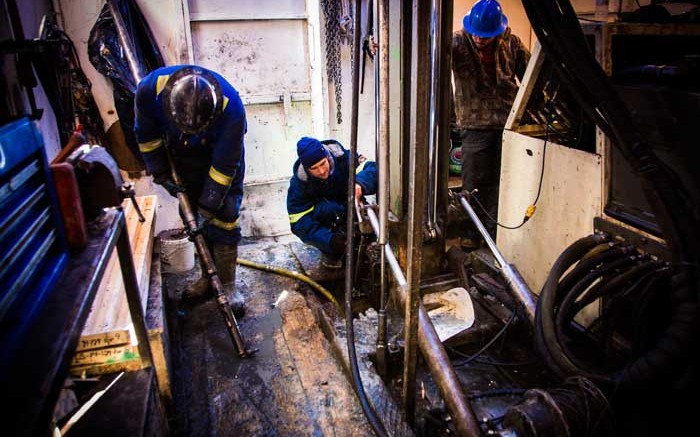VANCOUVER — Fission Uranium’s (TSXV: FCU; US-OTC: FCUUF) winter drill program at its Patterson Lake South (PLS) uranium project in the southwest Athabasca was a remarkable success.
When Fission started punching holes through the snow and ice at PLS in January, the project offered seven mineralized zones spread along 1.8 km of strike. Then Fission hammered the trend with 82 holes.
Every single hole hit uranium mineralization, a testament to the strength of the system at PLS and Fission’s understanding of it. The effort joined the four central zones into one mineralization body, added a new zone at the eastern end of the known strike, and added length and width to the other zones.
The drill program also produced the highest individual assay result, the longest off-scale radioactive interval and some of the best grade-length intercepts from the project to date.
The scintillometer results continued that trend, with seven of 12 holes returning intervals of off-scale mineralization.
Ten of the 12 holes tested the main zone at PLS — which is known as R780E — and all 10 returned radioactive mineralization. The best results came from hole 215, which cut 119.5 composite metres of mineralization including 24 metres of off-scale radioactivity, and hole 214, which returned 153.5 composite metres of mineralization including 23 metres of off-scale radioactivity.
Both holes hit mineralization 60 metres deep, illustrating the project’s major strength: high-grade uranium mineralization at shallow depths. Hole 209 also hit shallow mineralization, returning 96 composite metres of mineralization starting 54 metres downhole and including 14 metres of off-scale radioactivity.
A few days before, Fission released the assay results for hole 187, which returned the longest off-scale radioactive interval at PLS. The assay lived up to expectations: the hole returned 102.5 metres grading 5.98% uranium oxide (U3O8) starting 63 metres downhole. It is the longest high-grade intercept from the project and the second-strongest hole at PLS to date. The only hole with a thicker grade is hole 129, which returned 38 metres of 13.7% U3O8, 31.5 metres of 11.2% U3O8 and 11.5 metres of 6.82% U3O8.
As Fission’s four drills pause for the second-quarter spring break-up, mineralization at PLS shows five zones along 2.24 km of east–west strike. At the western end is R600W, a circular body with a 30-metre diameter defined by five holes. Half a kilometre east is zone R00E — the discovery zone at PLS. Defined by 32 holes, R00E strikes 165 metres and averages 45 metres wide.
Just 135 metres east is the edge of R780E, the largest zone at PLS. After 124 drill holes it strikes 855 metres and averages 95 metres wide. A 75-metre gap separates R780E from R1155E, a small zone defined by three holes.
Finally, 465 metres east of R1155E is R1620E, the newest zone at PLS. Targeted because of its location along the same kind of electromagnetic conductor associated with the known trend at PLS, and because of a single radon-in-water sample, the area has returned radioactive intervals in both drill holes to date.
Uranium mineralization at PLS is within and associated with a metasedimentary corridor, which Fission has tracked by identifying the electromagnetic signature of the basement rocks in the south. The corridor is open to the east and west.
As it waits for the ice to thaw, Fission will receive and interpret assay results from the winter effort and plan its mid-year exploration program. And it has the funds to keep exploring, after closing an oversubscribed offering in April.
Fission sold 18 million special warrants for $1.60 a piece, raising $28.8 million. Each warrant is exercisable into a share for no extra consideration.
The day the offering closed, Fission’s share price started a slide that has yet to halt. In the first three months of the year FCU gained 60%, climbing to $1.65 from $1.05, but since April the company’s share price has come off 40%, closing recently at $1.31. Fission has 332 million shares outstanding.


Be the first to comment on "Fission finishes winter PLS program with more hot holes"